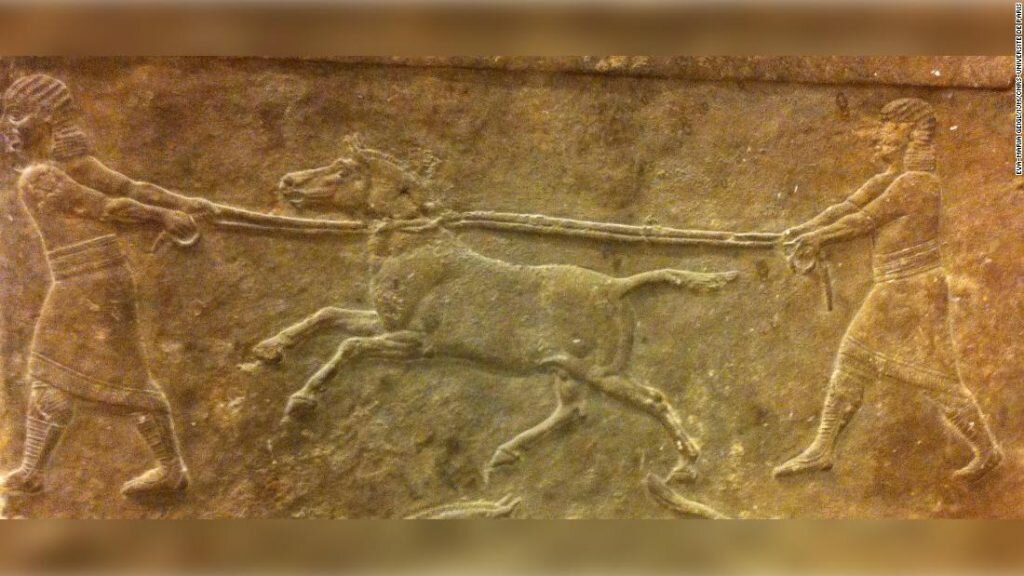Mesopotamians were using hybrids of domesticated donkeys and wild asses to pull their war wagons 4,500 years ago – at least 500 years before horses were bred for the purpose, a new study reveals.
The analysis of ancient DNA from animal bones unearthed in northern Syria resolves a long-standing question of just what type of animals were the “kungas” described in ancient sources as pulling war wagons.
The discovery suggests that early civilisation in what is now Syria was “really advanced technologically”, says Eva-Maria Geigl at the University of Paris in France.
“From the skeletons, we knew they were equids [horse-like animals], but they did not fit the measurements of donkeys and they did not fit the measurements of Syrian wild asses,” said study co-author Eva-Maria Geigl.
The new study shows, however, that kungas were strong, fast and yet sterile hybrids of a female domestic donkey and a male Syrian wild ass, or hemione – an equid species native to the region.
Ancient records mentioned kungas as highly prized and very expensive beasts, which could be explained by the rather difficult process of breeding them, Geigl said.

Because each kunga was sterile, like many hybrid animals such as mules, they had to be produced by mating a female domesticated donkey with a male wild ass, which had to be captured, she said.
That was an especially difficult task because wild asses could run faster than donkeys and even kungas, and were impossible to tame, she said.
“They really bio-engineered these hybrids,” Geigl said. “There were the earliest hybrids ever, as far as we know, and they had to do that each time for each kunga that was produced – so this explains why they were so valuable.”
Kungas are mentioned in several ancient texts in cuneiform on clay tablets from Mesopotamia, and they are portrayed drawing four-wheeled war wagons on the famous “Standard of Ur,” a Sumerian mosaic from about 4,500 years ago that’s now on display at the British Museum in London.
Archaeologists had suspected that they were some sort of hybrid donkey, but they didn’t know the equid it was hybridized with, Geigl said.
Some experts thought Syrian wild asses were much too small – smaller than donkeys – to be bred to produce kungas, she said.
The species is now extinct, and the last Syrian wild ass – not much more than a meter (3 feet) tall – died in 1927 at the world’s oldest zoo, the Tiergarten Schönbrunn in Vienna in Austria; its remains are now preserved in that city’s natural history museum.
In the new study, the researchers compared the genome from the bones of the last Syrian wild ass from Vienna with the genome from the 11,000-year-old bones of a wild ass unearthed at the archaeological site of Göbekli Tepe, in what is now southeastern Turkey.
That comparison showed both animals were the same species, but the ancient wild ass was much larger, Geigl said.
That suggested that the Syrian wild ass species had become much smaller in recent times than it had been in antiquity, probably due to environmental pressures such as hunting, she said.
Sources:
https://www.science.org/doi/10.1126/sciadv.abm0218
https://www.science.org/doi/10.1126/sciadv.abb0030

